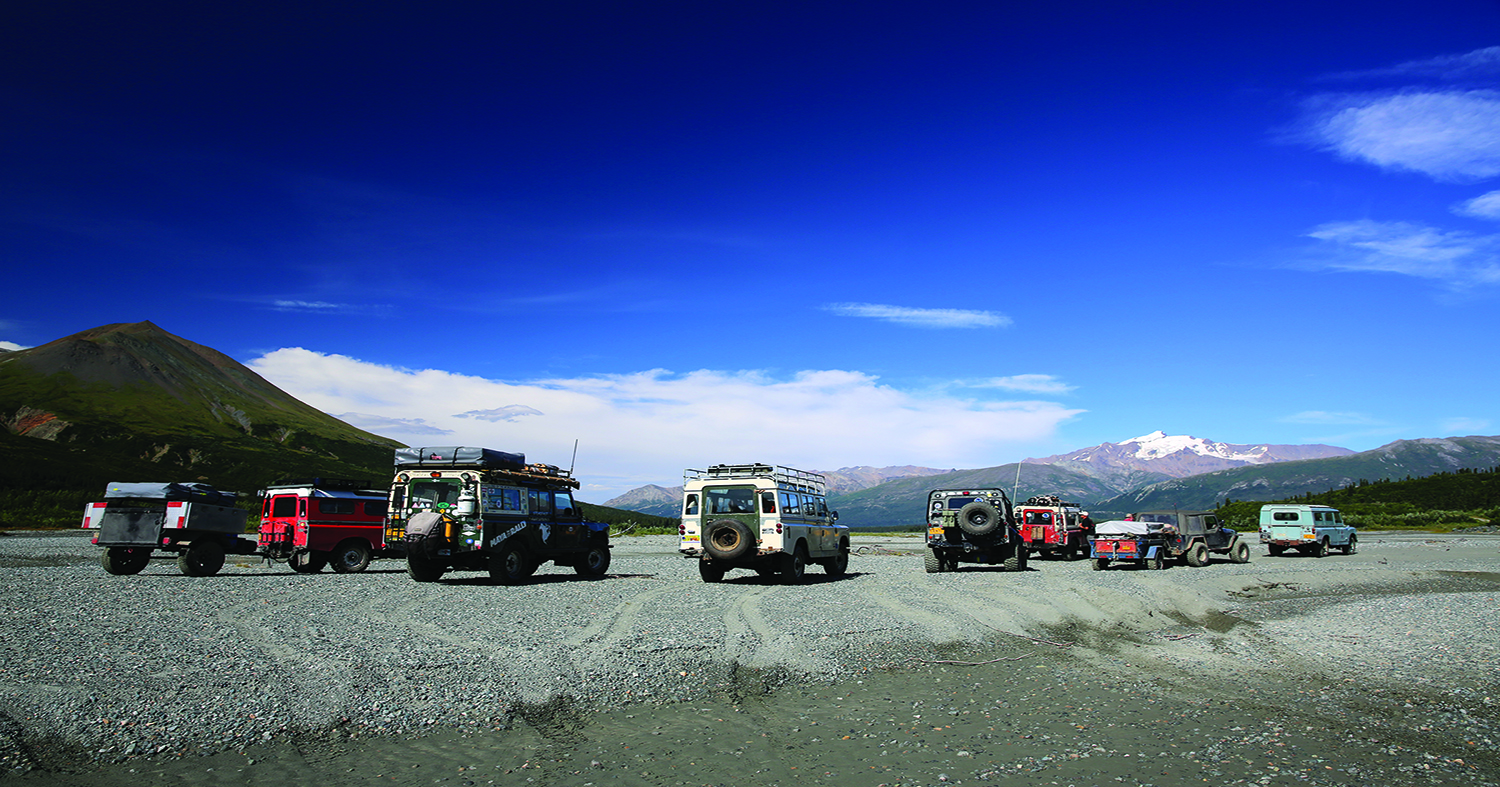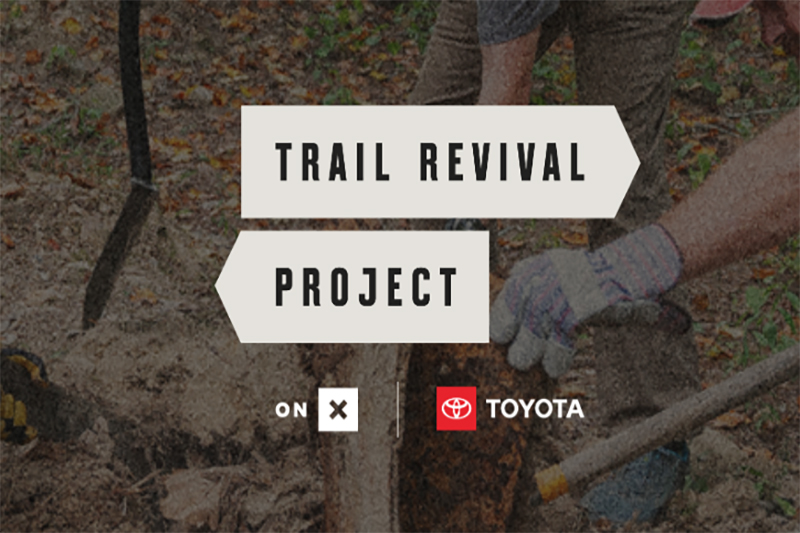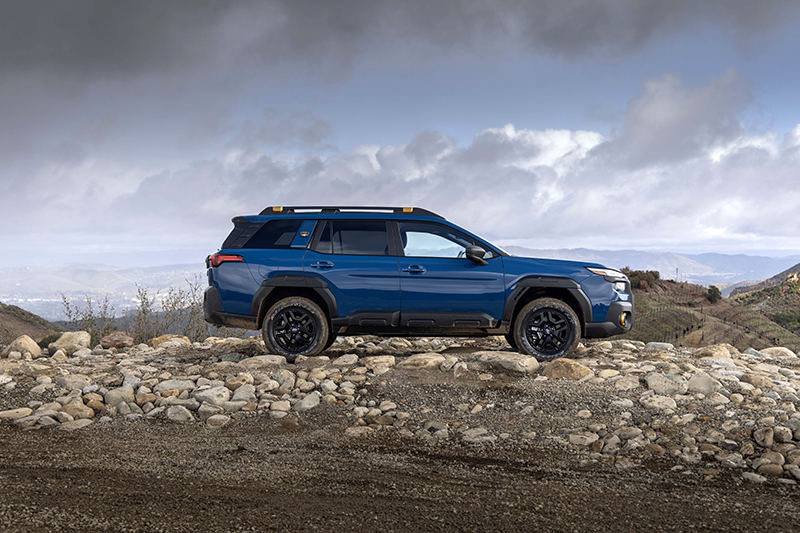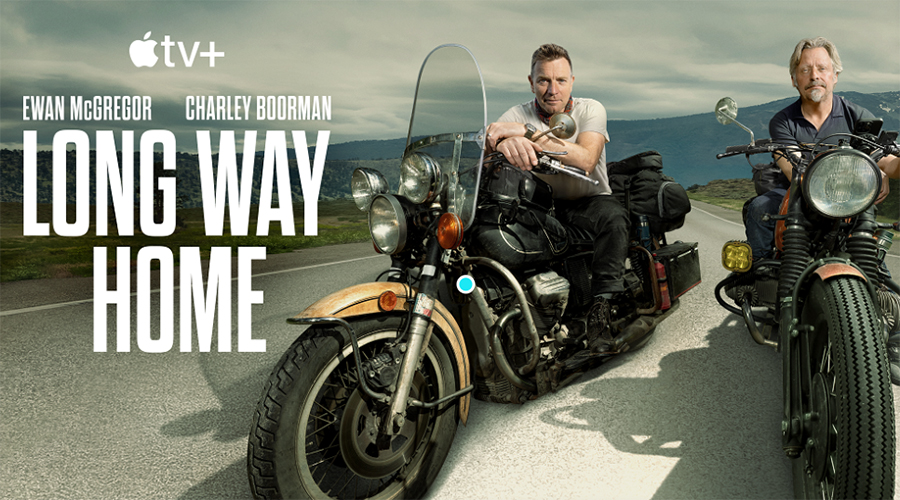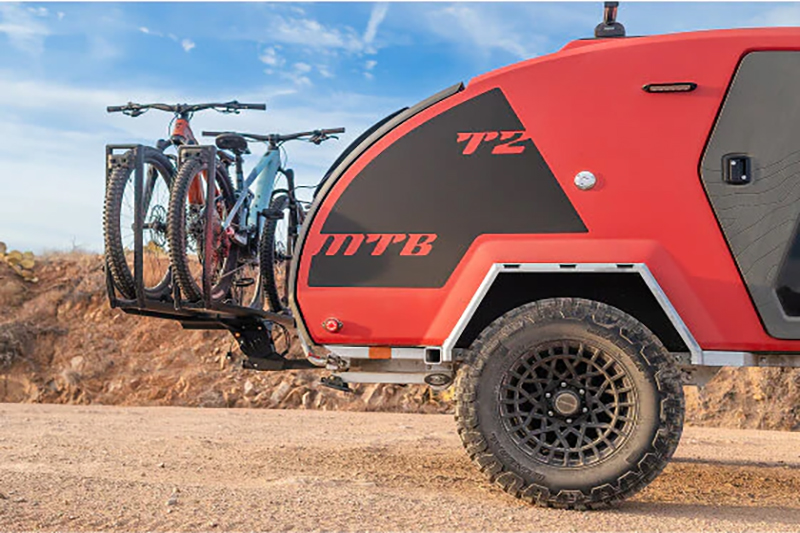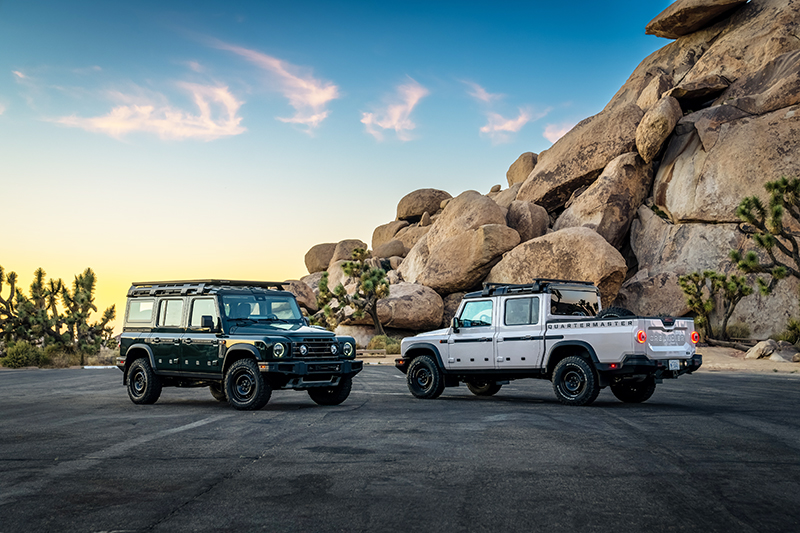An overland adventure 55 years in the making in 1960 Series II Land Rover
I awoke at 8 a.m. and made my way to a freshly brewed pot of coffee in Ed’s kitchen. While the caffeine was kicking in, Ed, his girlfriend Kathryn, and I began sorting through the details for the expedition, while Ted Pederson lay snoring on his bedroll behind the sofa where I had slept. The night before, between shots of Canadian whisky, we had planned the two-week schedule, mapped the route and outfitted the Land Rovers for our trip up the Dalton Highway. No wonder Ted was still sleeping.
The idea for the expedition had commenced in 1958 when Andrew Bacon and Martin Hugh-Jones were students at Cambridge University’s Veterinary School. After receiving a blessing from their professor and financial aid from the Duke of Edinburgh, they embarked on an expedition to study animal husbandry throughout the Americas. The ambitious journey would ultimately take them from Cape Horn to the Arctic Circle. What they didn’t know then was that it would take 55 years to complete the arduous journey.
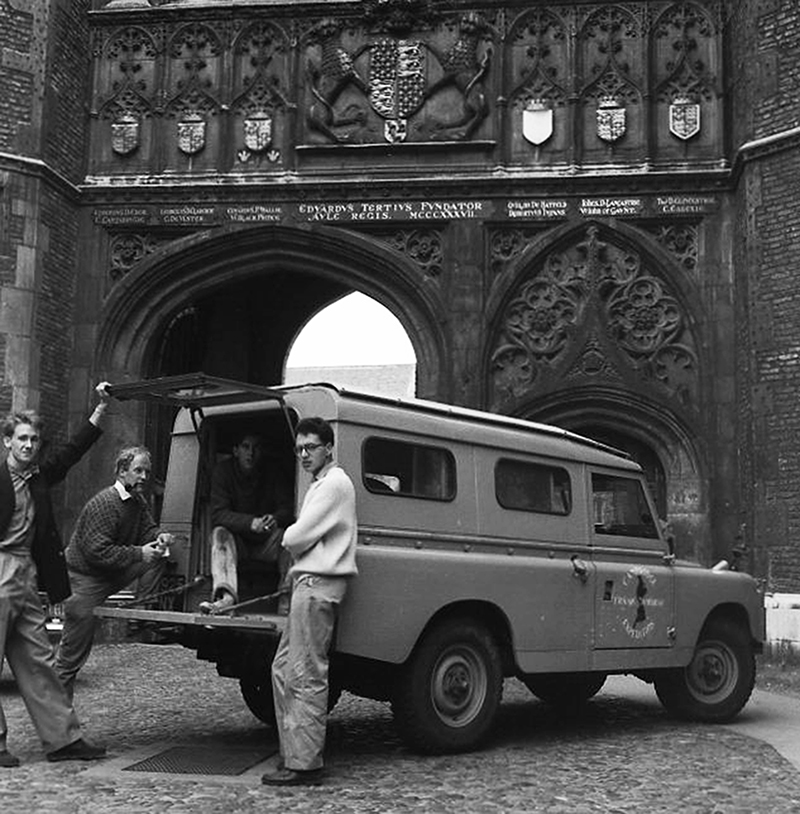
The Land Rover at Trinity College in 1960 – by Mike Andrews
Ed Angel, owner of Steadfast Off-Road in Peters Creek, Alaska, had worked around the clock for the past three weeks preparing a 1960 Series II Land Rover for an expedition to the Arctic Ocean. He had acquired the original Cambridge Trans-American Expedition 1960 Series II Land Rover a year earlier from Ted, who had recognized its historic significance as the original expedition vehicle. The two had talked about completing an expedition from Fairbanks to the Arctic Circle that Mike Andrews, Andy Bacon, Ben Mackworth-Praed and Martin Hugh-Jones fell a few miles short of achieving in 1961. Mike and Ben documented their amazing journey through their book Year with Three Summers, which was the first documented motorized expedition from the southernmost point in South America to Alaska. When Ed and I spoke in May of 2015, we planned to finish the original expedition by continuing to the shore of the Arctic Ocean.
I had become good friends with Ed in 1999 when we met at the Malaysia Rainforest Challenge. I was in attendance as a photojournalist and Ed was there as a competitor. Because the vehicle was 55 years old and in stock form, it would prove to be quite a challenge. If we succeeded, the vehicle would have been driven the entire length of the Americas, from the Beagle Channel, a strait in Tierra del Fuego, to the Beaufort Sea, a marginal sea of the Arctic Ocean in Alaska.
I called Ed to give him the good news that Mike – who was 76 – Martin, 79 at the time, and Ben, also 79, would be joining us in Fairbanks to complete their original expedition. It would only be the three of them since Andy had passed away years before. A week later, I arrived at his shop to find the Land Rover expedition-ready. Ed and I had agreed it should be left in stock condition except for a few modern modifications. Ed mounted new Goodyear G90 7.50×16 inch military tires on the original Cambridge blue steel wheels, and the original rear axle (bent from the 1960 expedition) was swapped for a stock Salisbury Series axle equivalent to a Dana 60. Ed performed a complete overhaul on the front axle that included all new bearings and seals. Our friends from ARB donated Old Man Emu shocks and the leaf springs were replaced with new old stock. Surprisingly, the stock Series motor was in decent running condition, considering its history of extreme abuse.
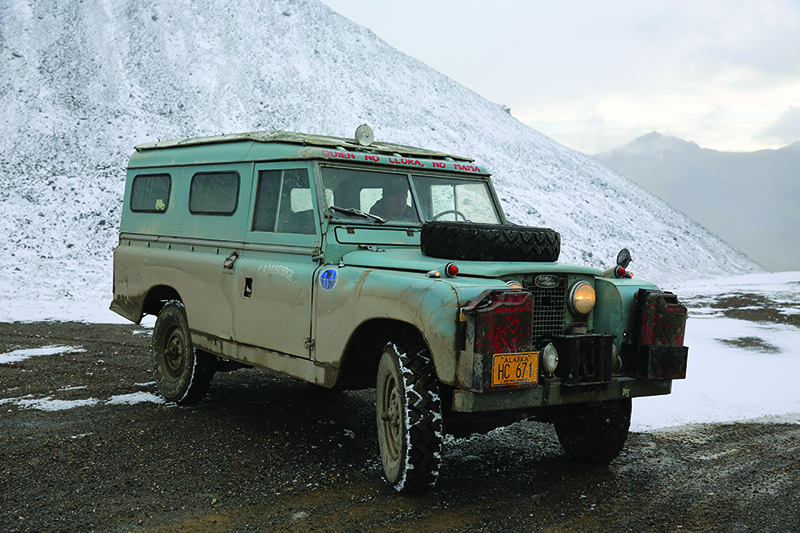
During a test drive Ed noticed the engine had low compression and was smoking a bit so he rebuilt the head and installed new wiring, seals and gaskets. Other than that, “Ole Blue” was ready to roll. The original signage of the Cambridge Trans-American Expedition was still visible on the doors but needed touching up. Ed recruited Perry’s Customs in Wasilla, Alaska to restore the artwork and had his daughter repaint the logo “Quien no llora no mama” which, translated, means He who doesn’t cry doesn’t suck above the windscreen.
Ed and I led the pack in the Cambridge Land Rover. Kathryn, Ted, Andrew Rexford, along with Tom and Freida Carpenter, all of whom were good friends of Ed’s and wanted to support the journey, followed in their vehicles from Peters Creek. In Palmer, Jason Beard and Jim Methvan, both good pals of Ed’s, joined the team in their vintage Land Rovers. We planned to drive about 100 miles on the Glenn Highway to our first camp on the Matanuska River. The first hour on the road, the Land Rover performed well until we began a long, steep ascent. Suddenly the dual fuel pumps heated up and we began to lose power. We were near Long Lake when Ed stopped to assess the situation.
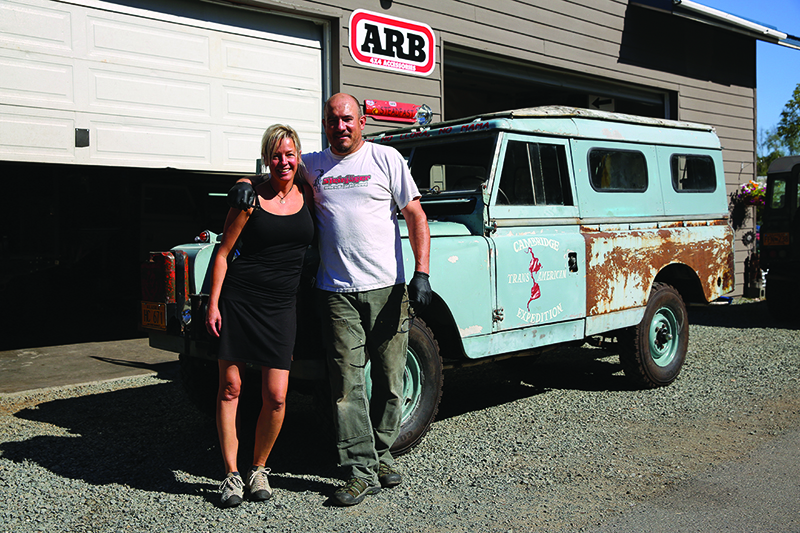
We got “Ole Blue” back on the road after Ed and Tom determined the problem was vapor lock. It was August and the temperature was in the low 90s. All we could do was press on and hope for cooler weather. At our remote camp near the Matanuska River, we sat around the campfire and enjoyed our first meal together. To celebrate, Ed opened a bottle of Crown Royal and some of us stayed up way too late discussing everything from the expedition route to Tom’s recipe for moose jerky.
We left the Matanuska River the next day and drove northeast on the Glenn Highway toward Glennallen. The Land Rover continued to sputter and lose power on long uphill grades. Ed decided an inline fuel pump might solve the problem and stopped at Napa Auto Parts. I stayed with the Rover while Ed went in the store and, while waiting, I overheard a middle-aged man in a pickup talking on his cell phone. “Honey, you’ll never believe it! I’m standing next to our old Cambridge Trans-American Expedition Land Rover.” Ray Kaiser had purchased the Land Rover in 1975 and owned it for 20 years, driving it to the Klutina River, Kennecott, McCarthy and the Knik Glacier. As we left, Ray said, “I’m happy to see it again and I hope you have as much fun with it as I did.”
We headed north on the Richardson Highway and arrived at our next camp on the Gulkana River around 6 p.m. Tom and Ed went to work installing the inline fuel pump. As they worked on the truck, I pitched my tent then built a fire. We had dinner next to the campfire and stayed up late drinking whisky and telling lies, agreeing the expedition was off to a great start and the old Rover was surprising us with its resilience.
The next morning, we left Gulkana River camp and retraced our tracks to the highway. We got our first glimpse of the Trans-Alaskan Pipeline as we neared the village of Paxson; eventually we would follow it 500 miles to Prudhoe Bay. By now, the fuel pumps seemed to be working properly and we camped on the Salcha River that evening. We awoke later than usual and headed for the Tanana Valley State Fair Campgrounds, an hour away in Fairbanks. We could have made it to Fairbanks the night before but decided instead to camp in a wilderness setting. While we were getting our campsites situated, I noticed that Justin Green and Wallace Butler had arrived in their Land Rovers. They had signed up to provide lunches and transport during the expedition.
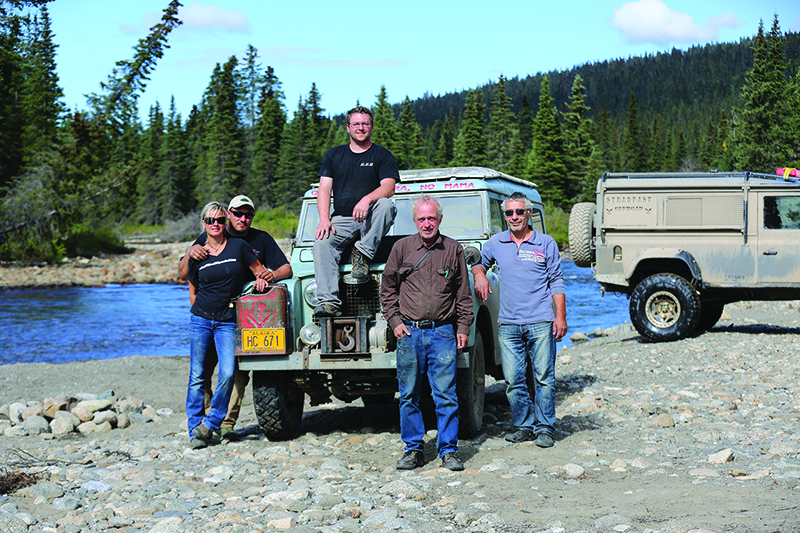
Later that evening Ed, Kathryn and I climbed into “Ole Blue” and headed to Pike’s Landing, a Fairbanks restaurant landmark. The other team members followed in their vintage Land Rovers and lined them up outside the restaurant where we were to meet Mike, Ben and Martin. Moments later, three older gentlemen with huge smiles on their faces strolled across the parking lot, the three surviving members of the original Cambridge Trans-American Expedition. We shared their excitement as they shook hands with the team and then climbed into their old Land Rover for the first time in over half a century. Mike peered out the driver’s side window and said, “I never thought I’d see this vehicle again.” As Ben inspected the interior, he grinned from ear to ear. He was surprised how well preserved the vehicle was and said, “She looks just like she did when we left her in Anchorage.”
Martin eyed the Land Rover quietly. I asked, “Does it look like you remember it?”
He replied, “More or less except for this,” pointing to the rusty rear quarter panel. He explained, “The boys were driving it when the accident happened, I never saw it.”
Ed chimed in, “So you weren’t there at the time of the accident?”
Martin replied, “No, I was getting engaged to a girl.”
Ed laughed and said, “Well at least you had your priorities straight.”
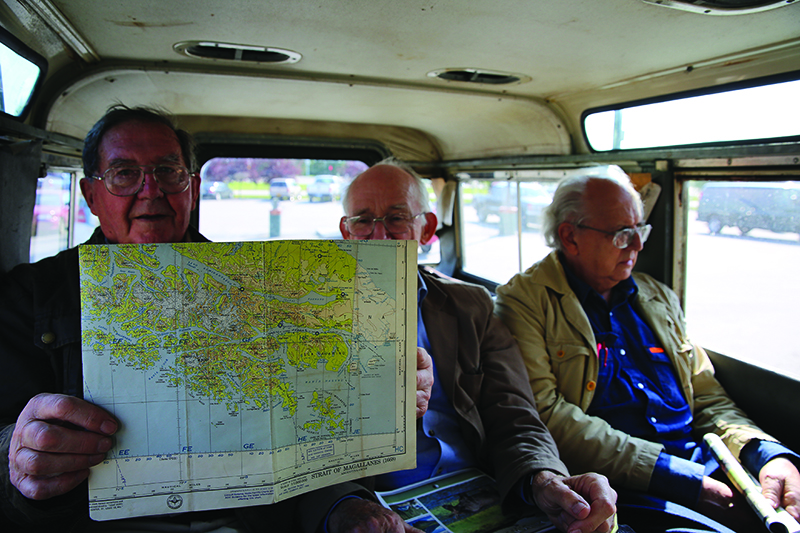
At dinner, Ed answered our questions regarding the expedition and I announced we had received permission from Hilcorp Alaska, LLC to drive across their property to the shore of the Arctic Ocean. Early in the planning stages, both BP and Shell had turned us down when we requested permission to drive through their private oil leases. At the last minute, Hilcorp heard of our expedition and expressed interest in hosting us at their Endicott Island facility. Paul Boots, facility manager at Endicott Island, agreed to meet us in Prudhoe Bay to escort us to the Beaufort Sea. The Englishmen were thrilled with the plan and as the evening wound down, the jet-lagged trio excused themselves for a good night’s rest.
We convened early the next morning for breakfast and a drivers’ meeting. Ed described the expedition route and everyone seemed excited. Mike Andrews was eager to drive the Cambridge expedition Rover from Fairbanks toward the Arctic Circle. Ed convinced him to ride shotgun instead, worried that “Ole Blue” might break down with another driver at the wheel. Mike was assured he could drive the Land Rover on the way back from Prudhoe Bay and seemed content with that. He jumped into the passenger seat with video camera in hand while Ben and Martin rode with Wallace Butler in the comfort of his 2000 Discovery. The team left Fairbanks in a steady drizzle and drove north to the Dalton Highway.
We stopped at Mile Post 0 of the Dalton Highway and took photos and video. Suddenly a stray Land Rover stopped in the middle of the slick, muddy road. Ted Pederson directed the driver to the side seconds before a tractor-trailer rig flew by, leaving him in a cloud of dust and flying rocks. It turned out the driver was Yves Fur Bringer, a solo Swiss adventurer touring North America in his 2006 Land Rover Defender 110. Yves seemed a kindred spirit, so the group invited him to tag along. Continuing on, the road became narrow, with soft shoulders, high embankments, and steep hills. We experienced constant, steady rain, slowing our progress as we traversed lengthy stretches of gravel with sharp rocks, potholes and washboard. An hour and a half later, we crossed the Yukon River. The mighty Yukon winds nearly 2,000 miles from Canada to the Bering Sea and is the longest river in Alaska. Mike was excited to see it and wanted to stop to film the bridge and pipeline spanning the waterway. While Mike was filming, the rest of the team enjoyed a lunch prepared by Justin Green from the back of his Range Rover Classic.
We made it to the Arctic Circle wayside roughly 60 minutes after leaving the Yukon River. The Arctic Circle is an imaginary line encircling the Earth at latitude 66 degrees, 33 minutes north of the equator. This stop was the final destination for the original 1960 expedition. Mike jumped out of the Land Rover before it had come to a full stop and ran to the Arctic Circle sign. The next hour was spent taking pictures of the three Englishmen with their Land Rover and celebrating their reaching the Circle. Now we were ready for the journey to the shores of the Beaufort Sea.
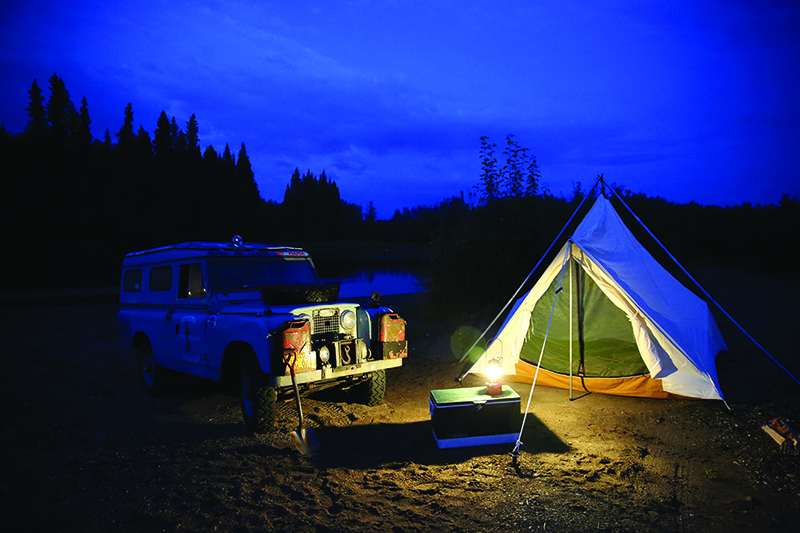
The team was jubilant as we arrived at Prudhoe Bay, but for some this was the end of the road. When Hilcorp gave us permission to drive to Endicott Island, the invitation came with restrictions. Only the three British explorers, Ed, Kathryn and I were given access. Knowing that, most of the team decided to drive back to Coldfoot and meet us later.
Paul Boots, a towering man and avid Land Rover enthusiast, awaited us in front of the Aurora Hotel. When we pulled up in “Ole Blue” he excitedly came over to the truck to greet us. If not for Paul’s interest in our expedition, it’s doubtful we would have made it past the hotel. He explained the only way for us to get through the security checkpoint at the entrance to Endicott Island was for him to drive the old Rover. Ed was able to ride with him in the historic expedition vehicle while the rest of us followed in a Hilltop van. At the checkpoint, we were motioned through without incident. A few meters later, Paul switched drivers and Ed drove his 1960 Cambridge Trans-American Expedition Land Rover to the shore of the Beaufort Sea.
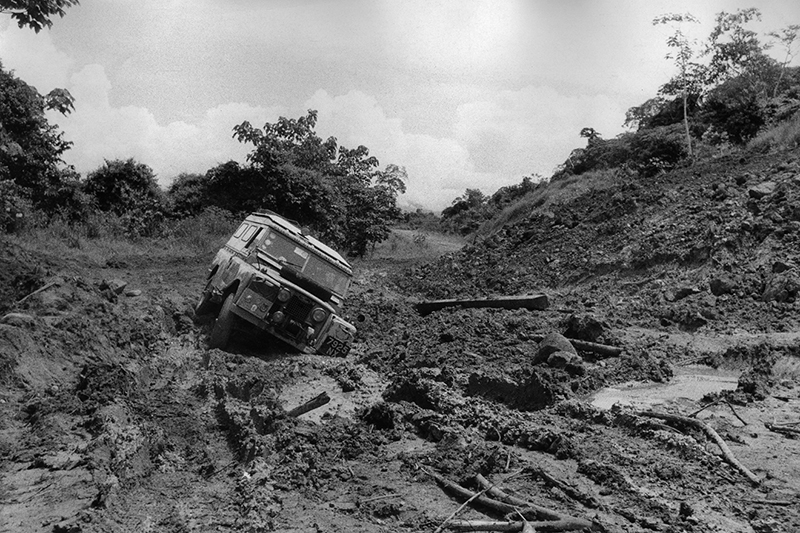
* From the original expedition in 1960* We had been told that the highway between Panama and Costa Rica was impassable in the wet season. We winched out of this without problem other than getting rather muddy.
We stood triumphantly on the beach while Mike, Ben and Martin got into the vehicle for a photo. Moments later, the boys from Bristol opened a celebratory bottle of bubbly and sprayed it on the vehicle in true sporting fashion. It was a monumental day in history to see the three of them standing on the shore of the Arctic Ocean so many years after their epic 1960 expedition. They all agreed it was the conclusion of a great lifetime adventure that came full circle. Actually from sea to circle to sea!
OutdoorX4 Magazine – Promoting responsible vehicle-based adventure travel and outdoors adventure


